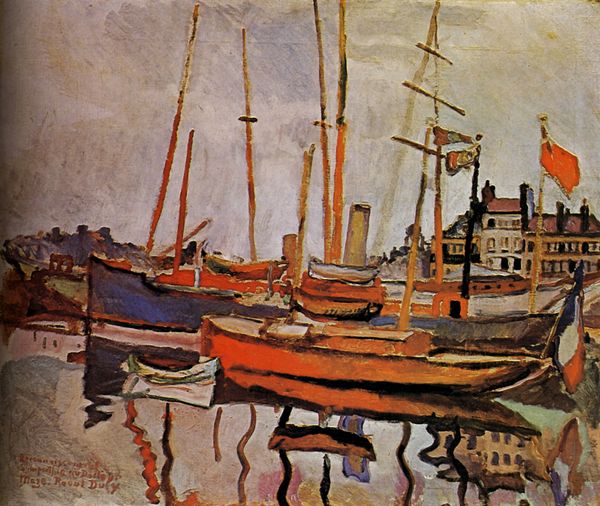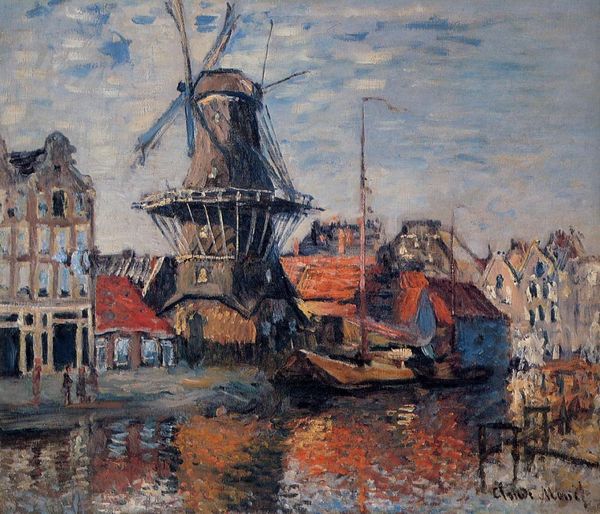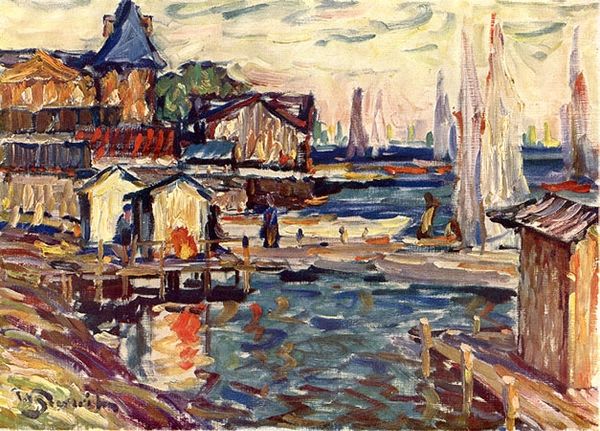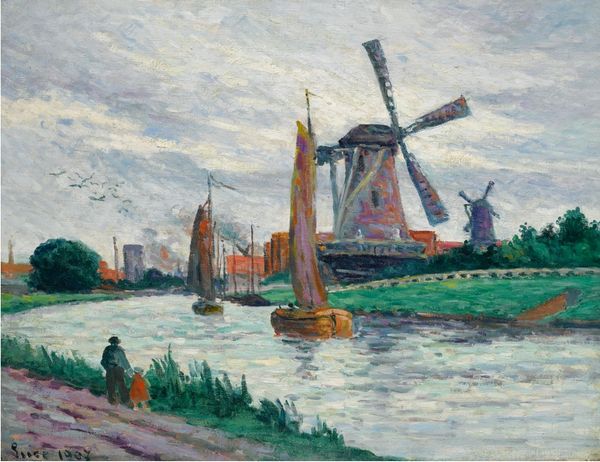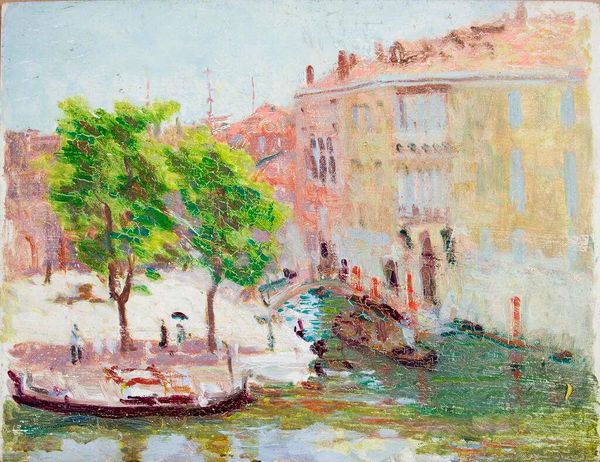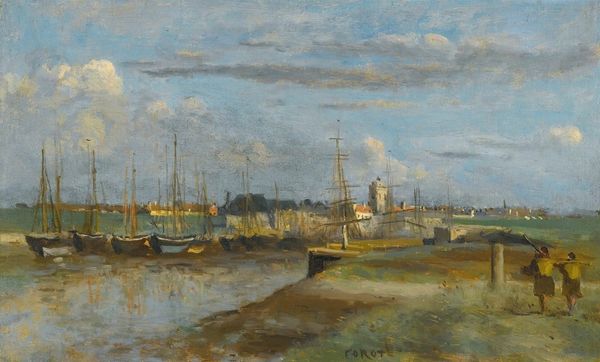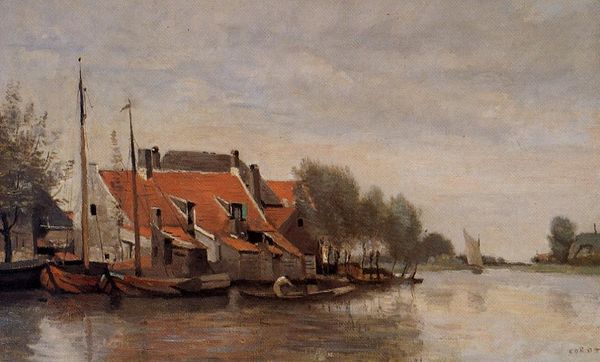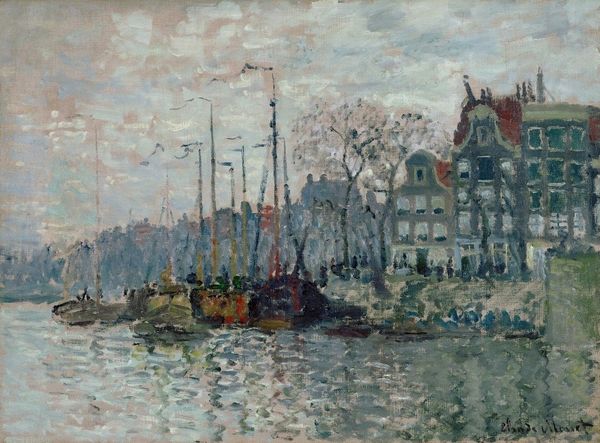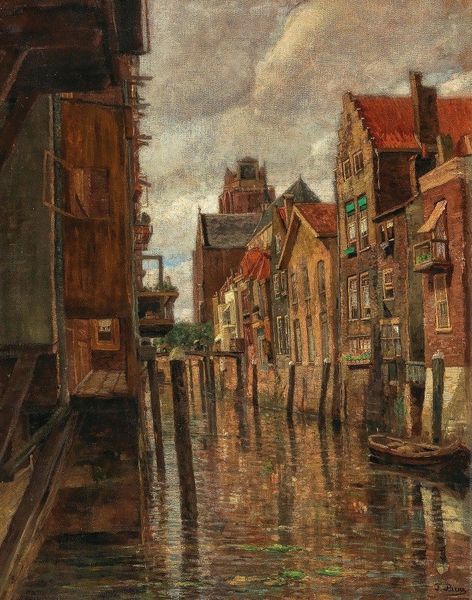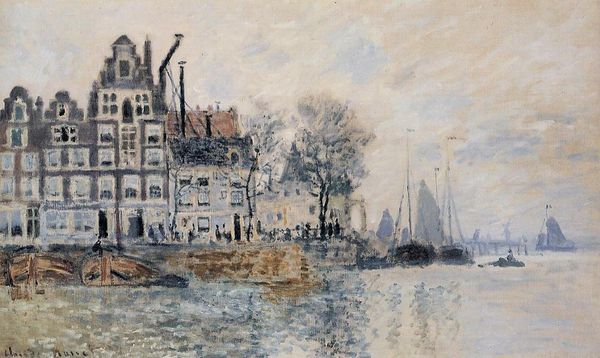
painting, plein-air, oil-paint
#
sky
#
painting
#
impressionism
#
impressionist painting style
#
plein-air
#
oil-paint
#
landscape
#
impressionist landscape
#
oil painting
#
water
#
cityscape
Copyright: Public domain
Claude Monet painted this impressionistic view of the canal at Zaandam in the Netherlands during his brief stay in the summer of 1871. Seeking refuge from the Franco-Prussian War, Monet found in Zaandam a kind of ready-made picturesque, as he put it, with its colourful houses and windmills. What we see is a conscious aestheticizing of a busy port town that had become a centre for shipbuilding. The stacked geometric forms are softened with a muted palette of pinks, greens and yellows, reflecting the light on the water. The composition emphasizes the flatness of the picture plane, a gesture towards abstraction. The formal qualities of this work are also suggestive of a particular set of social conditions. In the late 19th century, impressionist painters sought to represent modern life in all its fleeting, sensory impressions, often by depicting leisure activities and urban landscapes. One could research period accounts of travel and tourism to better understand this painting. What does it mean to choose a canal in Zaandam as a subject? Ultimately, the meaning of this painting depends on its historical and cultural context.
Comments
No comments
Be the first to comment and join the conversation on the ultimate creative platform.
